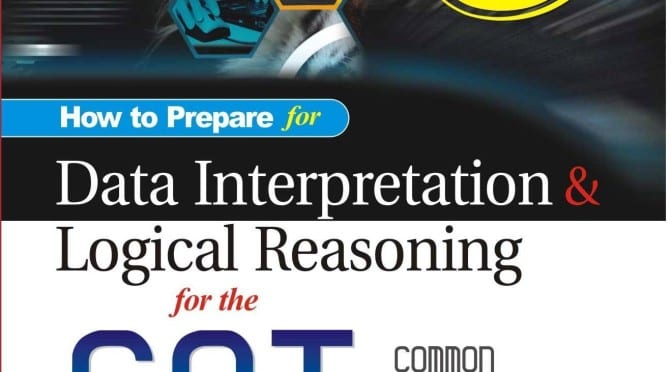 There is no doubt in anyone’s mind that Data Interpretation and Logical Reasoning is the least prepared section in CAT. I know that they have been merged with the other two sections now. However, we would still view them as a different part as of now. Some people are naturally gifted in Data Interpretation and Logical Reasoning while others find it very difficult.This is because these two areas are still not prepared as much as the other two sections (Quantitative Aptitude and Verbal Ability) are.
There is no doubt in anyone’s mind that Data Interpretation and Logical Reasoning is the least prepared section in CAT. I know that they have been merged with the other two sections now. However, we would still view them as a different part as of now. Some people are naturally gifted in Data Interpretation and Logical Reasoning while others find it very difficult.This is because these two areas are still not prepared as much as the other two sections (Quantitative Aptitude and Verbal Ability) are.
What's in this article:
Today, I am going to write a introductory article on how you should go on with your preparation for the Data Interpretation and Logical Reasoning questions.
First and foremost, you need to develop your skills in order to solve LRDI questions.
Developing your Logical Reasoning and Data Interpretation Skills
This is the most important step for your LRDI preparation.
So, how do you go about developing your Logical Reasoning and Data Interpretation skills?
There are two basic ways to do this:
1) Learn the concepts of all different areas tested in LRDI
There are a few basic concepts that are tested in questions based on Logical Reasoning and Data Interpretation. Concepts tested include ratio & proportion, percentages, addition & multiplication of 2, 3, 4 digit numbers, sorting lists, understanding graphs, etc.
You should go ahead and learn & practice these topics extensively so that you have a good understanding of these topics. Once you have a good knowledge of these areas, you must try to reduce the time taken by you to calculate these. In this way, you can do many more questions in the same amount of time.
This method would not be applicable if you do not have enough time to prepare. In that case, you should go with the second method.
2) Practice as many types of problems as you can so that you are prepared for anything.
The second way to go about these preparations is to practice as many problems as you can. What I mean to say is that you should prepare for all the different types of questions that come in the CAT paper. These include Pie Chart, Tables, Word Problems, etc.. Try and practice each of these.
While starting to solve any such type of question, you should start by solving a few simple questions. Once you are done with the simple questions, you should move on to moderate level and then finally to tough questions. After you are done with one topic, move on to others.
Below are some tips to improve your score in the LR DI questions
1) Do not assume any information
There are many questions which are framed in such a way that students assume an information and are unable to think of the other obvious option which hides behind their assumption.
Read this old joke type puzzle for example,
Ram goes with his father to a clinic. Ram says to the doctor in the clinic “I am your son.” How can this be possible?
Solution: The doctor is Ram’s Mother.
Though this is a simple example which many of you may have taken as joke, it gives us a very important lesson. And that lesson is to…..
2) Read everything carefully.. Do not miss out the lines below the diagram
There are times when we miss out on simple questions simply because we do not look at the information gives below the diagram. We are too focused trying to understand the figure that we do not pay attention to those ‘petty’ looking lines below the diagram.
Do not fall into this trap. Read each and every line carefully. If it is there, it is either important or it is there to confuse you
3) Pay close attention to key words
There are a few key words that change the whole meaning of the sentence or the question. For example, words such as “all”, “some”, “none”, “at least”, “at most”, etc.. are important. Not reading or forgetting these words may lead to incomplete or improper understanding of the question.
For example, look at the sentences below:
a) The 4 parts constituted of 35% share.
b) The 4 parts constituted of 35% share EACH.
Notice how adding one EACH to the sentence changes the meaning so significantly.
Use this if necessary
4) Be on a look out for simple questions
If you have solved the previous year CAT papers, you must be aware of one fact for sure. The fact that there are always a few simple questions hidden between difficulty questions. Be on a look out for these questions and solve them. They are more of bonus questions. Finding them will help you solve more questions quickly. Attempt difficult ones only when there are no simple ones left.
5) Finally, improve your calculation speed
If there are two people who could solve the same question in 30 seconds and 5 seconds respectively, who do you think would get a better score (other things being constant)?
I would conclude this point with only that statement.
Best of luck.


Leave a Reply
You must be logged in to post a comment.